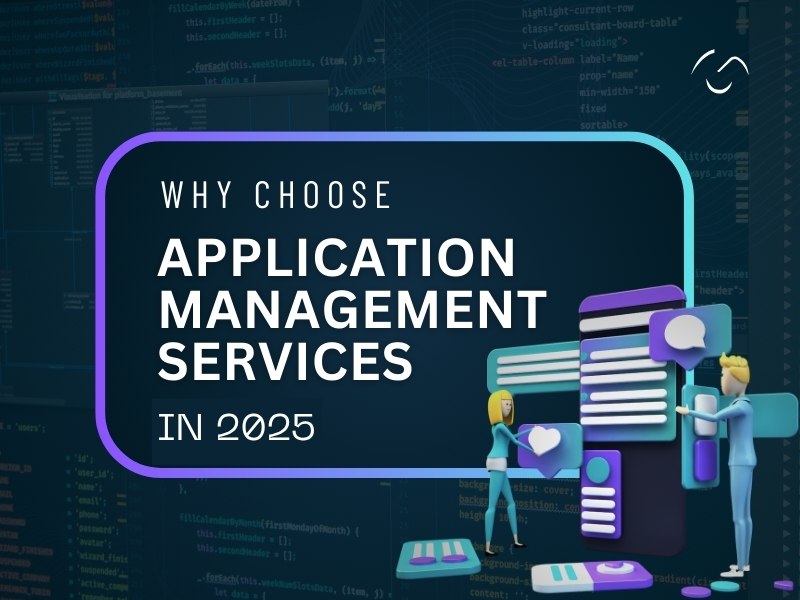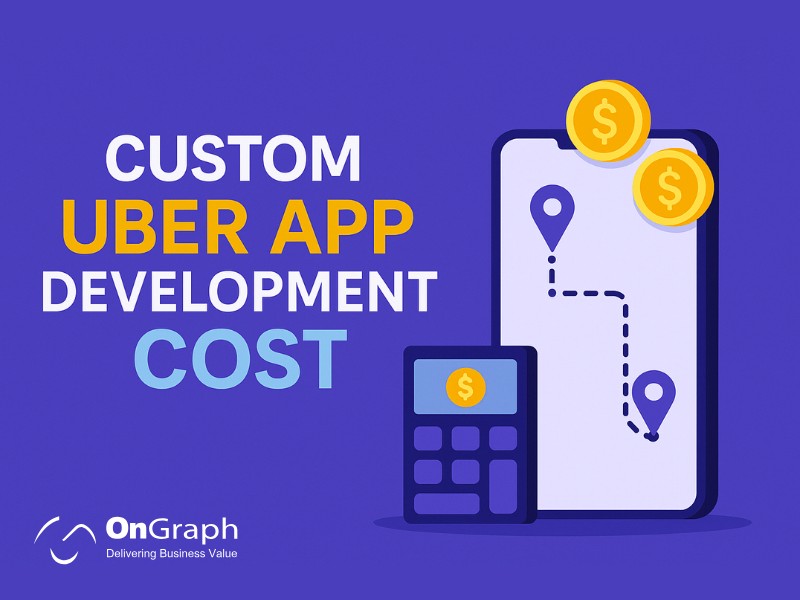In this article
- What Are Application Management Services (AMS)?
- Driving Factors Behind the Growth of AMS
- Benefits of Application Management Services
- Application Management Services vs. IT Support: Key Differences
- Application Management Services Guide: Key Components
- AMS Case Study: Improving Online Store Performance
- Signs You Need Application Management Services
- How to Choose the Right AMS Provider?
- Benefits for SMBs and Large Enterprises
- Conclusion
In today’s digital-first world, application management services (AMS) have become a vital part of how businesses streamline IT operations, enhance user experience, and ensure continuous growth.
As businesses scale and rely more heavily on their digital platforms—whether mobile, cloud-based, or desktop applications—the need for robust, proactive, and scalable AMS application management services has never been greater.
These services ensure the smooth functioning of your applications, proactively identify and resolve issues, and provide continuous improvement throughout the application lifecycle.
The global AMS market is expected to grow significantly, with projections showing an increase from $17.12 billion in 2020 to $94.79 billion by 2030.
This growth is driven by the increasing adoption of cloud computing, the need for secure and scalable applications, and businesses’ demand for high-performance solutions.
In this article, we will dive deeper into Application Management Services, explore their benefits, and provide a guide to help you understand how these services can optimize your business operations in 2025.
What Are Application Management Services (AMS)?
Application management services refer to the comprehensive management of applications throughout their lifecycle. This involves overseeing the development, implementation, support, maintenance, and optimization of software applications.
AMS providers help businesses manage and monitor their applications, ensuring they are running optimally, securely, and meeting the changing needs of the business.
By choosing application managed services, businesses can focus on their core objectives while leaving the management and performance of critical applications to experts.
This ensures that companies can improve operational efficiency, reduce downtime, and enhance the user experience without getting bogged down by the complexities of software maintenance.
Driving Factors Behind the Growth of AMS
Several key factors are driving the demand for application management services across industries:
- Digital Transformation: As businesses integrate new technologies to remain competitive, AMS helps in managing this transformation by ensuring that applications are efficient, secure, and scalable.
- Cost Optimization: Companies are increasingly looking for ways to cut costs. With AMS, businesses can avoid the high costs of in-house IT management by outsourcing to specialists.
- Security and Compliance: With the growing concerns about data breaches and regulatory requirements, AMS providers ensure that applications are secure, up-to-date, and compliant with industry standards.
Benefits of Application Management Services
Cost Savings
According to industry reports, 40 to 72% of businesses use AMS to reduce operational costs. AMS allows businesses to avoid the significant costs of hiring in-house teams, maintaining infrastructure, and managing complex IT systems.
By outsourcing the management and support of your applications, you can save money and allocate resources to more critical areas of your business.
Improved Efficiency and Productivity
By delegating the management of applications to AMS providers, businesses can focus on their core operations. AMS teams follow agile and DevOps practices, speeding up the development lifecycle and ensuring faster time-to-market. Real-time monitoring helps detect issues before they become significant, enhancing operational efficiency.
Enhanced Application Performance
Continuous monitoring and optimization are integral components of AMS. Regular updates, patches, and performance tuning ensure that your applications run smoothly and are always up-to-date.
Providers focus on improving application performance management, reducing latency, and enhancing user experience.
Proactive Approach to Maintenance
AMS is proactive in identifying and fixing issues, unlike traditional IT support, which often reacts to problems after they arise. AMS providers use tools to monitor your applications 24/7, ensuring that potential issues are detected and addressed before they cause disruptions.
Access to Expert Knowledge
With managed application services, businesses have access to a team of experts with specialized knowledge and skills.
These professionals stay up-to-date with the latest technologies, frameworks, and best practices, ensuring that your applications are managed using the most current and effective techniques.
Optimize Your Apps, Boost Your Business!
Application Management Services vs. IT Support: Key Differences
While IT support services typically focus on resolving technical issues as they arise, application management services are much broader, encompassing the entire lifecycle of an application. Here’s a quick comparison:
| Aspect | Application Management Services (AMS) | IT Support Services |
| Focus | Manages the entire application lifecycle | Resolves specific technical issues |
| Goals | Optimizes app performance, security, and updates | Ensures smooth IT operations and troubleshooting |
| Expertise | Specialized in app development, optimization, and security | Broad knowledge in hardware, software, and networks |
| Proactive or Reactive? | Proactive, focusing on prevention | Reactive, focusing on problem resolution |
| Impact | Directly affects business operations and productivity | Indirect impact on overall business operations |
Application Management Services Guide: Key Components
A comprehensive application management service includes several critical components to ensure the smooth running of applications:
1- Infrastructure Management: Managing the infrastructure that supports your application, including provisioning and maintaining servers, networks, and cloud resources.
2- Service Management: Ensuring that your application runs smoothly by managing incidents, service requests, and service-level agreements (SLAs).
3- Application Monitoring and Optimization: Continuous monitoring of application performance to detect issues such as downtime, slow performance, and bugs. Optimizing the app’s efficiency and user experience is key to maintaining high-quality service.
4- Security and Compliance: Protecting your applications from security breaches by applying regular patches, security measures, and ensuring compliance with regulations like GDPR or HIPAA.
5- Licenses and Compliance: Ensuring that the application is up to date with the relevant software licenses and is compliant with industry-specific regulations.
AMS Case Study: Improving Online Store Performance
A large online retailer used application management services to manage its eCommerce platform. The AMS team performed continuous monitoring, patching, and performance optimization, leading to:
- Faster Load Times: By optimizing server requests and database queries, page load times improved by 25%.
- Security Improvements: Regular security patches and monitoring reduced potential vulnerabilities, ensuring data protection for users.
- Higher Conversion Rates: Performance enhancements led to a smoother shopping experience, reducing cart abandonment and increasing conversion rates by 15%.
Signs You Need Application Management Services
If your business is experiencing any of the following signs, it might be time to consider application management services:
1- Frequent Application Downtime: If your app faces frequent downtimes or technical issues, AMS can help ensure consistent uptime.
2- Poor Performance: Low application speed or lag can deter users. AMS can help optimize performance for better user engagement.
3- Security Risks: If your application isn’t following the latest security practices or if you face frequent breaches, AMS providers will help you secure your app.
4- Complexity in Management: If managing your application’s infrastructure, updates, and scalability has become complex, AMS can streamline the process.
How to Choose the Right AMS Provider?
Choosing the right application management services provider is essential for maximizing benefits. Here are key factors to consider:
1- Expertise: Look for providers with experience managing applications similar to yours.
2- Customization: Ensure that the AMS solution is tailored to your business needs and future growth.
3- Cost Structure: Evaluate pricing models to ensure they fit within your budget while offering the necessary services.
4- 24/7 Support: Choose a provider that offers round-the-clock support for ongoing maintenance and patches.
5- Service Level Agreements (SLAs): Ensure that the provider has clear SLAs that guarantee the timely resolution of issues.
Let Experts Manage Your Apps Effortlessly!
Proactive monitoring, instant support, and peak performance—all hands-off for you.
Benefits for SMBs and Large Enterprises
For SMBs, AMS allows businesses to access top-tier expertise without the need for large in-house teams. This helps them scale effectively while keeping operational costs low.
For Large Enterprises, AMS enables businesses to manage a vast number of complex applications efficiently. The cost savings from outsourcing application management can be reinvested in strategic growth initiatives.
Conclusion
Application management services are essential for businesses looking to scale efficiently, improve operational performance, and ensure the security of their applications.
Whether you are an SMB or a large enterprise, AMS can streamline your operations, reduce costs, and improve your application’s performance, enabling your business to remain competitive in a fast-changing digital world.
By partnering with the right AMS provider, like OnGraph, businesses can leverage expertise, improve productivity, and drive long-term success.
FAQs
Application Management Services (AMS) refer to the comprehensive suite of services provided by a third-party provider to manage and maintain an organization’s software applications throughout their lifecycle. These services include monitoring, maintenance, troubleshooting, optimization, updates, and security management. AMS providers ensure that your applications are running efficiently, securely, and are up-to-date with the latest patches, ensuring high availability and performance.
The primary difference lies in the scope of work. AMS focuses on the lifecycle management of software applications, including development, updates, optimization, and security. It takes a proactive approach to ensure that applications are running efficiently. On the other hand, IT support services generally focus on resolving technical issues and providing assistance to users when problems arise, often on an ad-hoc or reactive basis. AMS providers manage the overall health and performance of your applications, while IT support handles immediate technical issues or service requests.
The key benefits of Application Management Services include:
- Cost Efficiency: Reduces the need to hire and maintain an in-house IT team, lowering operational costs.
- Improved Application Performance: Regular monitoring and optimization ensure better performance and fewer disruptions.
- Increased Security: AMS providers manage security patches, updates, and compliance, helping to mitigate risks.
- Scalability: AMS providers help businesses scale their applications to meet growing demands, ensuring continuous uptime.
- Focus on Core Business: With AMS handling application management, businesses can focus more on their core operations and strategic goals.
The cost of Application Management Services varies based on the complexity of the application, the scope of services required, and the size of the business. For small businesses or SMBs, AMS may cost anywhere between $2,000 to $10,000 per month, depending on the provider and service offerings. Larger enterprises with complex needs may spend $20,000 or more per month. Pricing is typically structured as a monthly fee, and many providers offer flexible plans based on business needs, including customized packages for specific requirements.
Application Management Services improve app performance through regular monitoring, troubleshooting, and optimization. AMS providers ensure that your applications are always running at their best by:
- Monitoring app performance and user experience in real-time.
- Implementing necessary updates and patches to prevent bugs and performance lags.
- Identifying and resolving root causes of slowdowns, errors, or downtime.
- Optimizing database performance and server load balancing.
These proactive measures ensure a seamless experience for users and improve overall app efficiency, reducing the risk of disruptions.
Choosing the right AMS provider requires careful consideration of several factors:
- Expertise: Ensure the provider has experience managing applications similar to yours, and that they understand your industry needs.
- Customization: Look for a provider that offers tailored solutions to fit your specific business requirements.
- Security: Ensure the provider has robust security protocols in place to protect your application and its data.
- Scalability: Choose a provider that can scale services as your business grows and new needs arise.
- Support: Ensure the provider offers 24/7 support and quick response times for any emergencies.
- Cost: Make sure their pricing aligns with your budget while offering the necessary level of service and support.
By considering these factors, you can find a reliable AMS provider who will help ensure your applications run smoothly and securely while aligning with your business goals.
About the Author
Let’s Create Something Great Together!
Latest Blog
















